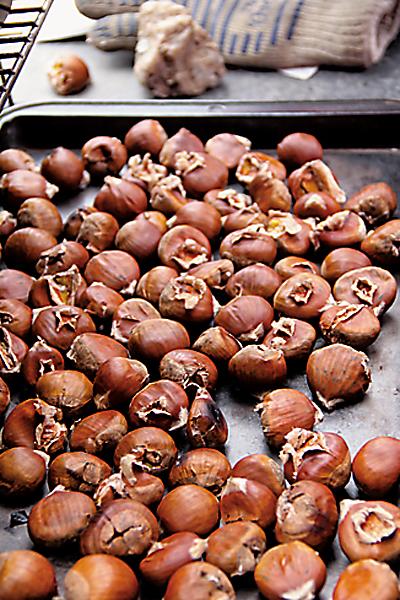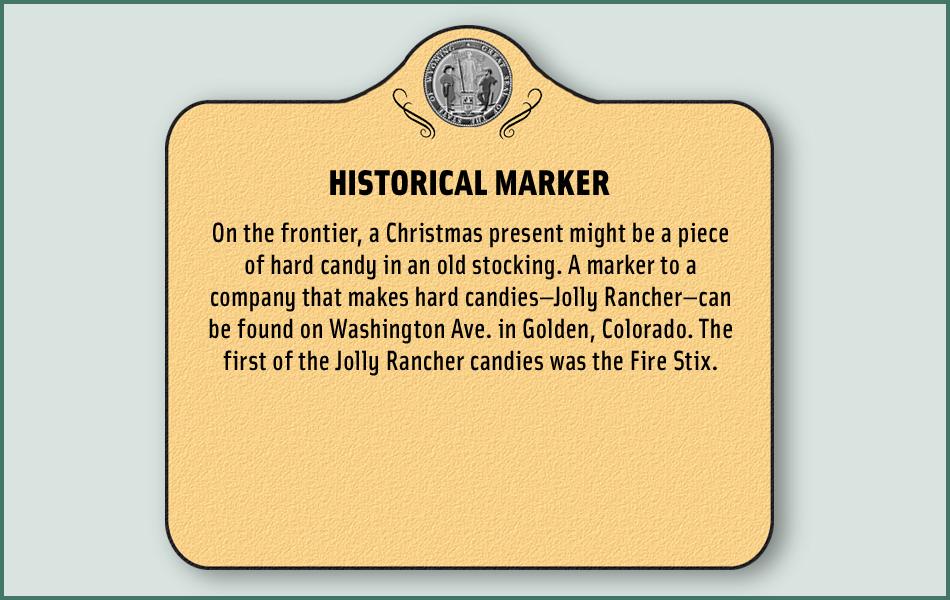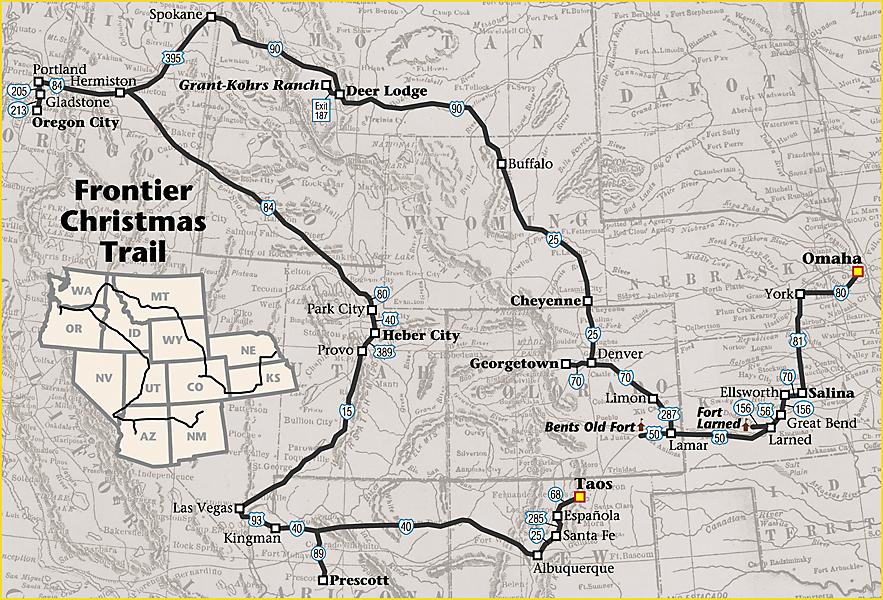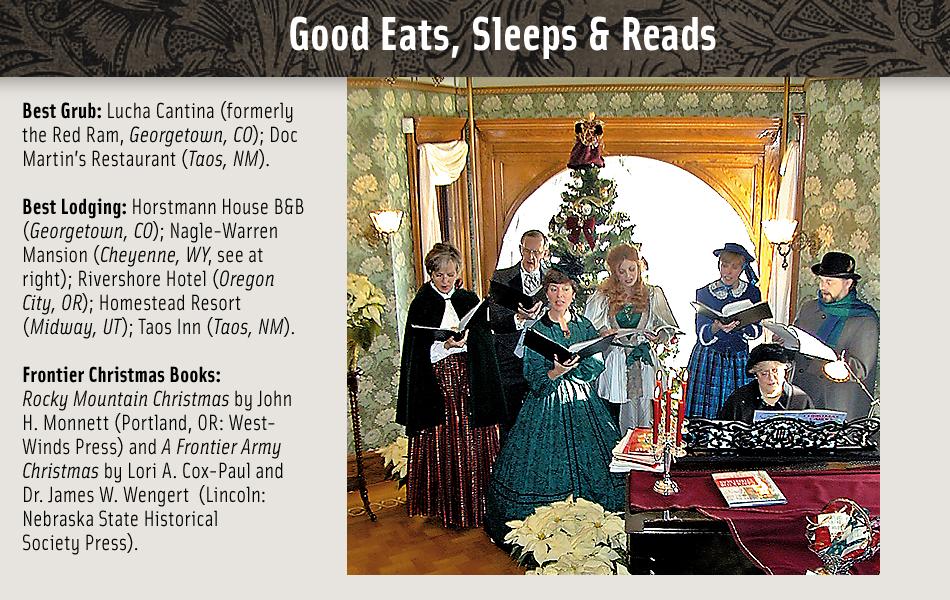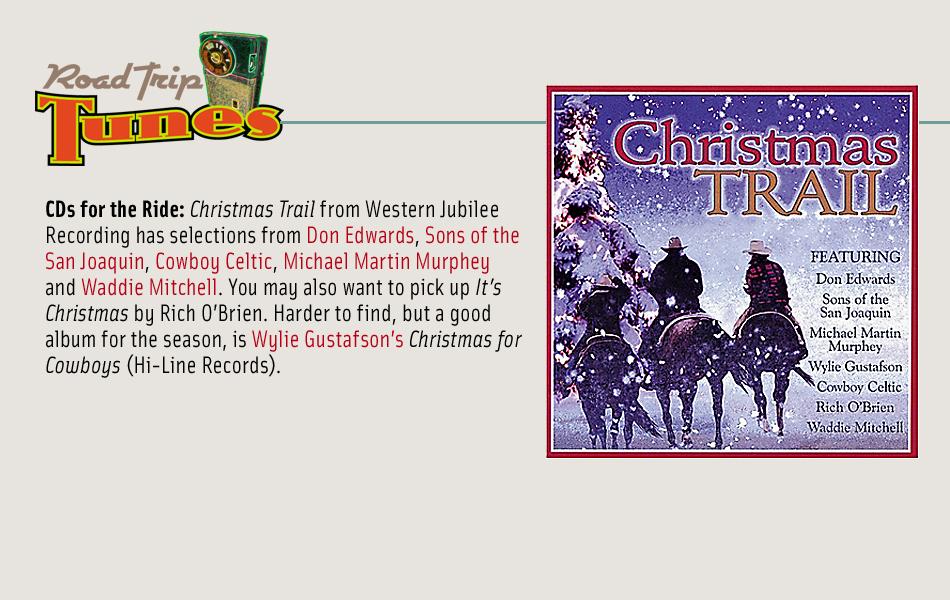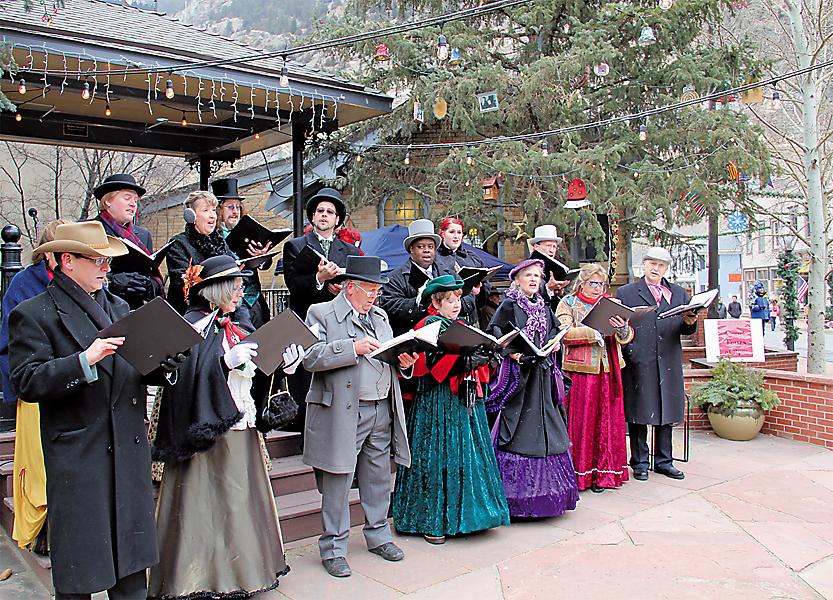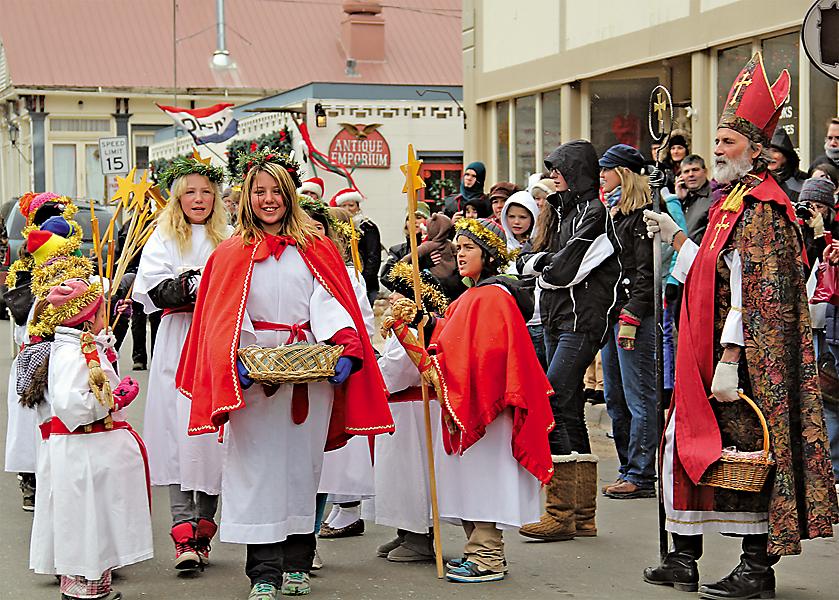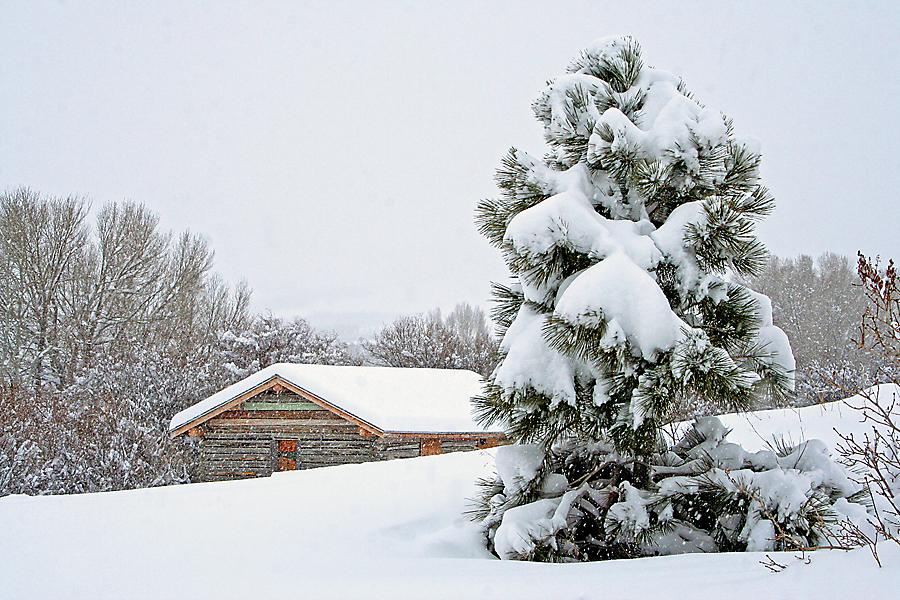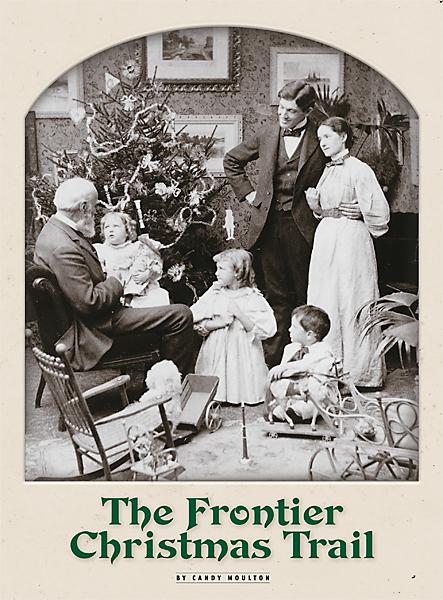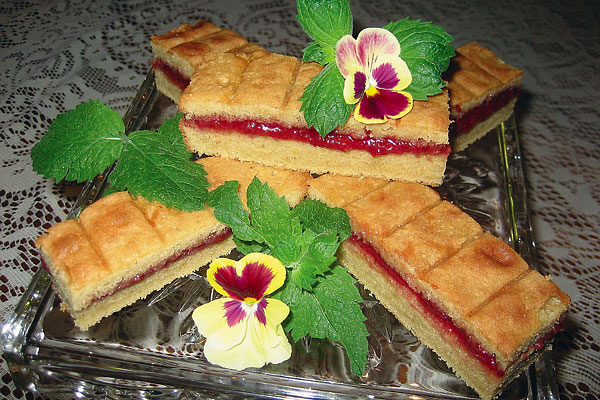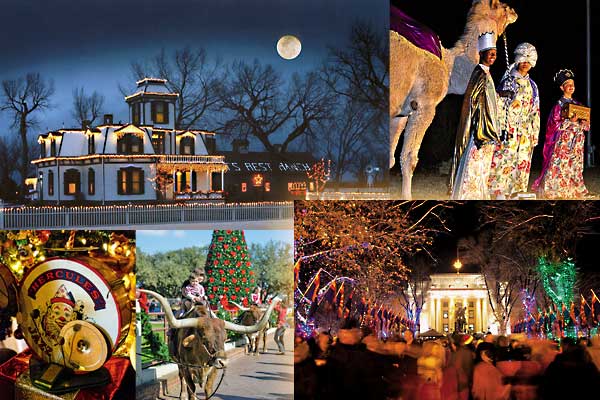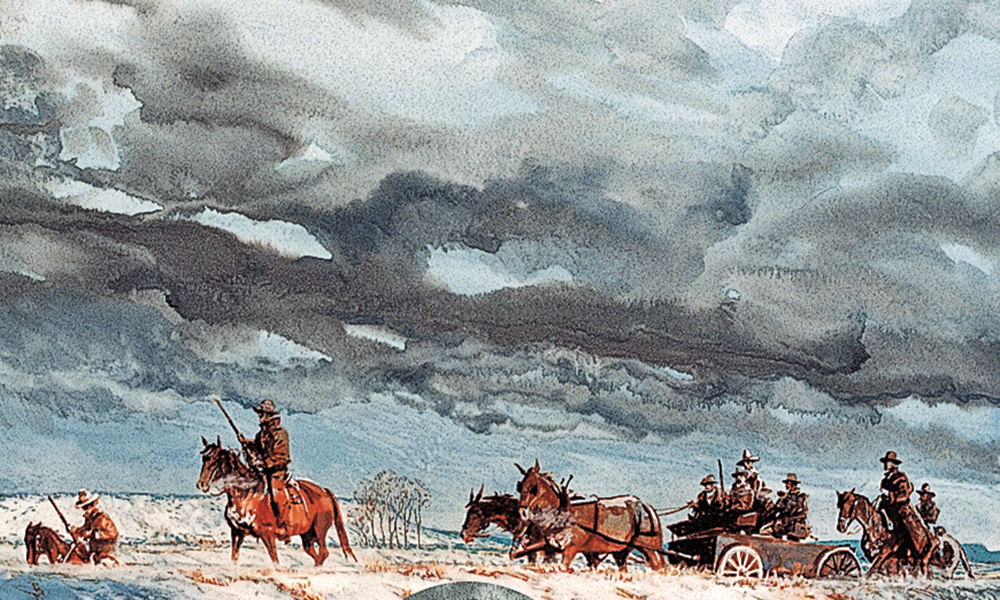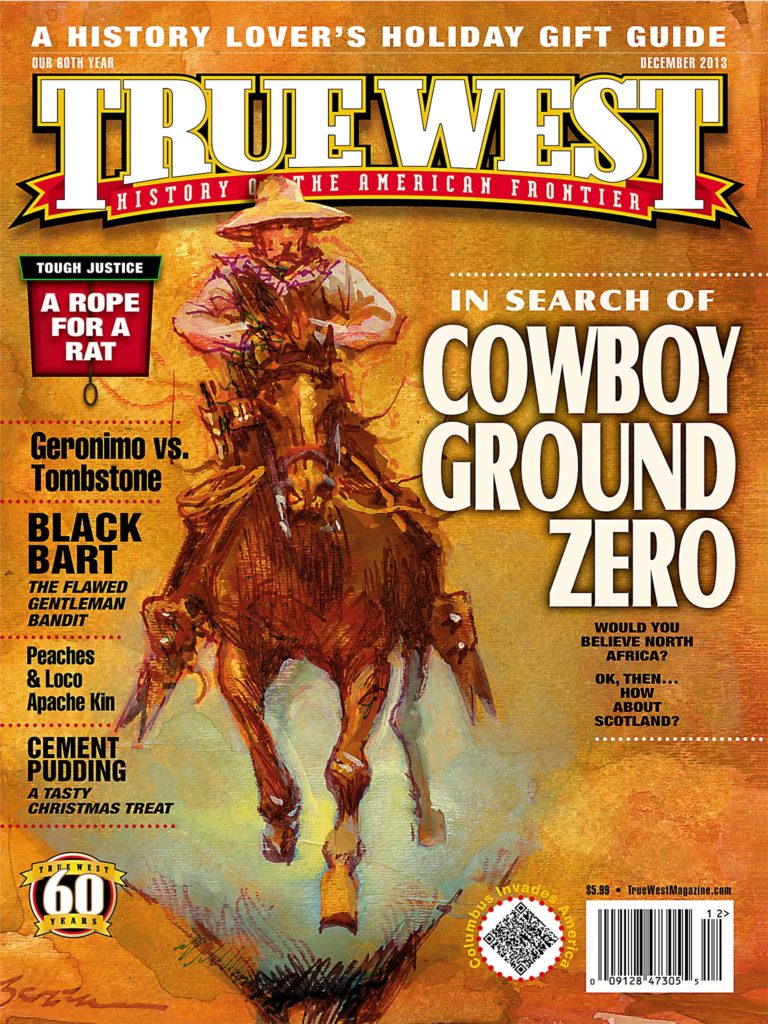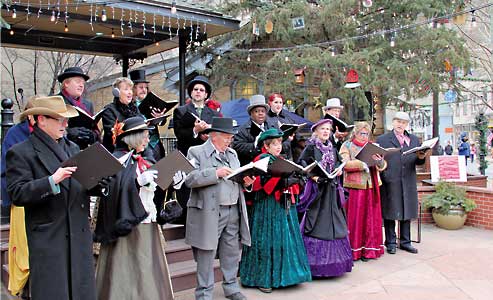 Chestnuts roasting on an open fire. Well, actually they were roasting on a gas barbecue grill, but those warm chestnuts made good hand warmers in the crisp, cold December air at Christmas Market in Georgetown, Colorado.
Chestnuts roasting on an open fire. Well, actually they were roasting on a gas barbecue grill, but those warm chestnuts made good hand warmers in the crisp, cold December air at Christmas Market in Georgetown, Colorado.
At an open fire nearby, people turned and toasted to warm up, whenever they weren’t standing in line for a hot drink or watching St. Nicholas lead the Santa Lucia Children’s Procession into downtown Georgetown.
Carolers took turns singing traditional Christmas songs, with many of the women clothed in long bright dresses and cloaks and the men styled in top hats and tails.
The line started early and snaked along the sidewalk as people waited a turn to enter the Shoppe Internationale, which sells an eclectic selection of Christmas gifts from Russian nesting dolls to German beer steins and Belgian lace.
Shoppers came from all around Georgetown, drawn to the Christmas Market like a frontier family in town for a once-a-year shopping spree.
By the late-19th century, most Westerners who commemorated the birth of Jesus Christ made some attempt to celebrate Christmas. Their celebrations centered around a tree—often sagebrush, a cottonwood or even a tumbleweed, in the Plains where few evergreens could be found—and some gifts. They strung together cranberries and popcorn to drape on the tree, enhanced by pieces of colored paper or ribbon. To the limbs, they attached candles, placed in tin holders and lit only under constant supervision as they could easily start a fire.
Knitted socks, scarves and mittens found their way into Christmas packages or onto tree branches, as did food items such as apples, oranges and canned fruits, and candy like taffy or popcorn balls. Little girls received rag dolls and miniature quilts, while little boys got tops or toys carved from locally available wood.
Even those settlers who seldom went to town made at least one trip in anticipation of Christmas, perhaps to buy essential goods such as flour or sugar for the winter, or to purchase shoes, coats or other clothing, necessities that served as presents.
Western merchants catered to the demand. Georgetown’s Miner newspaper reported in 1872: “Monti & Guanella, agents of Santa Claus in Georgetown, are preparing to fill all orders for Christmas goods promptly, and to the entire satisfaction of their customers. The innery [sic] old gentleman flashing over the country with his capacious freight teams, has cramed [sic] the large store of his favorite agents with turkies [sic] and chickens, gobbling and crackling, to grace Christmas feasts. And then such quantities of vegetables, fruit confectionary, cake and toys for little girls, blushing maidens, stately dames, little boys and old boys, as the jolly old elf has on exhibition at his headquarters at Monti & Guanella’s is a sight entertaining and highly satisfactory to the inhabitants of the ‘Silver Queen.’”
In modern times, Georgetown’s Christmas Market, held this year on December 7-8 and 14-15, boasts festivities for all ages. Although merchants hope you will fill your shopping bags here, the atmosphere is not overly commercial. This mountain town has retained its mining-era charm. You can ride a horse-drawn wagon through town and then eat cookies handed out from baskets by girls walking amongst the crowd. The Christmas Market offers a way for you to step back into a holiday event that settlers may have experienced during pioneer days.
While you are in town, you will want to take part in “Christmas at Hamill House.” A butler welcomes guests, taking coats and inviting you to enjoy all that is traditional about Christmas, in this 1867 home first built by Joseph Watson and later lavishly expanded by his wealthy brother-in-law, William Arthur Hamill. In the parlor, a piano player plays carols and visitors lift their voices in harmony. The dining room table groans with hors d’oeuvres.
This is a party with a limited guest list, so everyone can gather together in the dining room to hear the Silver Plume Singers and to engage in toasts as wassail cups are passed. Saint Nicholas makes an appearance, and a yule log is burned, as was traditional custom.
But the best part of the evening comes when everyone gathers in the conservatory sitting area for the lighting of the Christmas tree. This is not flip-the-switch lighting. As young children read the Clement C. Moore classic The Night Before Christmas, one candle after another is carefully lit, while carolers let music ring out in their voices. As a soft glow spreads throughout the room, the simple ceremony reminds you that the holiday has a meaning far beyond the fast-paced, 21st-century activities that usually consume our celebrations.
In the evening, female guests depart carrying a rose, a tradition started by Mrs. Hamill decades earlier. With luck, snow will be falling over covered ground, creating a white landscape as you continue along our frontier Christmas trail.
An Officer’s Holiday
Holidays on the frontier were not always celebrated in Victorian mansions. Indeed, many Westerners were stationed at a military post that offered few, if any, opportunities to host grand celebrations. But that did not discourage them from recognizing the holidays. Today, many places can help you experience what frontier soldiers and civilians would have observed during Christmas.
Overlooking the majestic parade grounds and historic buildings of Fort Omaha in Omaha, Nebraska, is the Crook House, constructed for the Civil War general in 1879, the same year he was named defendant in the landmark trial of Ponca Chief Standing Bear. The Crook House Guild transforms every room in the house into places of Christmas grandeur, which you can tour from early November through December. (If you plan to be in Omaha in December, see if you can time your trip so you can also attend the Wells Fargo Family Festival, a free event on December 8 when trolleys connect you to tours at the Joslyn Art Museum, Omaha Children’s Museum, the Durham Museum at Union Station and the Omaha Police Mounted Patrol Barn.)
Fort Larned, near Larned, Kansas, hosts a Frontier Christmas event each December, giving you a peek into life at the fort in 1868 via Christmas scenes on Officer’s Row, in the enlisted men’s barracks and even in the post hospital. During the fort’s key operating period, in the 1860s-70s, Christmas was highly anticipated. Planning began in the summer, if only to ensure decorations and special food could be made or ordered in time for holiday events.
To give you an idea of the kinds of special meals prepared at frontier forts, a second lieutenant’s wife at Montana’s Fort Peck served the following for Christmas dinner: soup, salmon croquettes with egg sauce, raw oysters, potatoes, roast beef, prairie chicken, sweetbreads, currant jelly, asparagus salad, cheese and crackers, sherbet, cake and candies.
“Uncle Dick” Wootton had a different treat in mind when he arrived in Denver City, Colorado, on Christmas Eve in 1858 with a couple barrels of Taos Lightning. He no doubt improved the celebratory spirit of settlers as he dispensed the whiskey, launching the first saloon in the area.
Farther west on the Santa Fe Trail, Bent’s Old Fort, a national historic site near La Junta, Colorado, also hosts special holiday events, including candlelight tours and demonstrations of 1840s toys, games and activities. Here, as at other state and national park facilities around the West, living historians re-create a Christmas atmosphere and share stories of the holidays in a much earlier time.
Christmas Showcases
Begin your holiday celebration at the 1888 Nagle-Warren Mansion in Cheyenne, Wyoming, by taking part in high tea. The Christmas tree blooms with Victorian decorations, and the repast you share with other guests is extensive (usually scones, tarts, candies, cookies, shortbread and petite sandwiches). Piano music fills the air, as folks converse about their holiday plans. Texting or cellphone calls are inappropriate during high holiday tea at the Nagle-Warren.
A Victorian Christmas at Grant-Kohrs is a family outing packed with music in the ranch house, children’s activities in the dairy barn and horse-drawn wagon or sleigh rides on the still-active 1862 cattle ranch in Deer Lodge, Montana. Fully decorated for the holidays, the 23-room mansion is open for tours; you can even enjoy some hot cider or hot chocolate while
exploring the barn.
If you prefer a more “modern” form of transportation than a horse-drawn vehicle, consider a ride on the 1899 Heber Valley Railroad. Operating out of Heber City, Utah, the railroad runs the “North Pole Express” from late November through December, giving families a chance to ride the rails, have hot drinks served by elves and even meet Santa and Mrs. Claus.
For a British twist on a Victorian Christmas celebration, head to the McLoughlin House in Oregon City, Oregon, in December. Built in 1846 by Dr. John McLoughlin, the chief factor of Fort Vancouver, the home is filled with appropriately-attired volunteers playing period music and games, and serving refreshments made from 1800s recipes. You won’t want to miss the Christmas tree lighting held downtown in this oldest incorporated city west of the Mississippi River. (In alternating years, older homes open for parlor tours.)
Follow the Luminarias
Prescott, Arizona, is Arizona’s Christmas City. Its many holiday offerings include the “world’s largest gingerbread village” at the Prescott Resort (Norway may contest that title) and holiday lights in Fain Park and at the downtown courthouse plaza, which also glows from festive luminarias. Be sure to make time to step into Christmas Past at the ever-impressive Sharlot Hall Museum.
Old Town in Albuquerque, the Santa Fe Plaza and the plaza in Mesilla are all New Mexico places that provide unique, inviting atmospheres for the holidays, with plenty of shopping, decorative luminarias and seasonal music.
The quintessential locale on our frontier Christmas trail is Taos Pueblo at Christmas Eve. After Mass in the San Geronimo Chapel, you will hear mingling voices singing hymns in English and Spanish as men wearing traditional clothing parade through the ancient village.
The ceremonies conducted at Taos Pueblo, including the sacred deer dance that takes place on Christmas Day, are important to the residents who have lived in this pueblo for generations. You are welcome to observe them, but be respectful and leave any modern trappings, such as cameras and cellphones, in your car. These aren’t appreciated here. Instead, enjoy these uplifting ceremonies and let all of your senses awaken to the spirit of a frontier holiday.
Candy Moulton loved the slower-paced Victorian atmosphere of Georgetown, Colorado’s, Christmas Market, especially the tree lighting at Hamill House.
Photo Gallery
– All photos by Candy Moulton unless otherwise noted –
The frontier Christmas celebrations you will find along our special holiday trail pay tribute to the Victorian Christmases celebrated by families like this one, enjoying a visit with Grandpa on Christmas morning in 1897.
– True West Archives –


